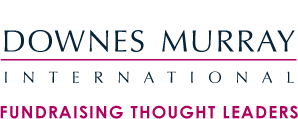Click to go back

Where there's a Will
Bequests are the bread and butter of every planned giving programme, according to Amy Gill, director of gift planning strategy and stewardship at The Nature Conservancy. Everyone older than 18 can and should have a Will, she added, and it’s easy to add a charitable bequest to a Will.
Bequests require two key actions: the donor must work with a professional advisor to create a Will and the donor can choose to tell the charity that a charitable bequest is in a Will.
Direct mail can motivate individuals to do both actions.
For bequest prospecting, the conservancy mails 45 000 pieces two times a year, in September and in January.
Age segments.
The goals of the mailing are to emphasise the importance of having an estate plan, inspire the donor to work with you, start a conversation and request additional information, said Gill.
To add relevancy and immediacy, Gill said the prospecting piece is targeted to three age segments: the importance of creating a Will is targeted for 45- to 60-year-olds; the focus for those 61 to 74 is the importance of updating your Will after retirement, and for those older than 75, it’s about drafting a final Will. Among the reasons Gill offered to ‘uncover bequest commitments,’ is that it builds your legacy society and gives nonprofits an opportunity to ‘steward the donor’; aids in planning for the future, and helps an organisation gauge the loyalty of its membership.
Call to action.
Gill recommends a strong call to action, giving a clear reason why you want to know about bequests, and also providing donors with the opportunity to remain anonymous. Of the 20 000 pieces mailed as part of the 2006 bequest notification programme, Gill said there were 14 inquiries and 42 notifications (a 0.28% response rate), that would generate $7.4 million in future revenue.
In each case, Gill said she worked with the membership department to synchronise mail dates and suppress overlapping audiences. Gill emphasised several key points to the campaign. One, drafting a Will is a process much harder than simply writing a cheque, so be patient while the prospect completes the process.
Two, since planned gifts bridge the gap between membership and major gifts, don’t expect results at membership gift levels. And finally, the mailing will more than pay for itself, as dollars raised with planned gifts are much greater than with membership gifts.
The Nature Conservancy’s average bequest is $176 000, Gill said, while the average age for someone to complete their first Will is 44, and the average age for their first charitable bequest is 49. Then there’s also direct response for planned giving via the telephone. Gordon Smith, national director of gift planning for the National Jewish Medical and Research Centre, said there is information that you can only get over the telephone, such as whether a person is charitably inclined, if they have a Will and have included a charity, or if they’ve completed a charitable gift annuity. One can also determine the degree of qualification and motivation of a donor, and whether follow-up is appropriate, he said.
Smith suggested calling a donor at a time when they are most likely to be receptive, such as thanking them right after they’ve made a gift, during an annual phone a-thon, prior to an event or to inform them of an exciting new project or development.
Laura Lucas, manager of annual giving, University of Missouri-Columbia, explained that the annual fund at Missouri incorporated both direct mail and telemarketing into the school’s planned giving campaign.
Direct mail pieces were revised to include more elements of planned giving, and Lucas utilised data ratings to help segment her audience.
She wanted to limit the impact on annual fund income. For the telemarketing aspect of the campaign, Lucas outsourced a survey calling on planned giving prospects.
Lucas determined the population to make the campaign more cost-effective, testing data from internal and external sources. She focused on lower-level priority prospects, limiting by age and range, with preferences for annual fund donors and married alumni, while excluding graduate level alumni.
Different letters were used for each type of quality response and all responses received a follow-up through a joint effort by the Office of Gift Planning, the Annual Fund and directors within the schools and colleges.
Results.
The early results showed 138 quality leads, 18 conversations started about planned giving, in addition to closing two planned gifts, according to Lucas. All that out of 1 200 completed calls for the 2 000 records. Six months later, the next mailer included information for those not interested, somewhat interested and very interested.
With acknowledgement to
The NonProfit Times November 15, 2006.
This article first appeared in
Fundraising Forum: Issue 76, June 2007.

